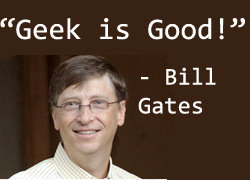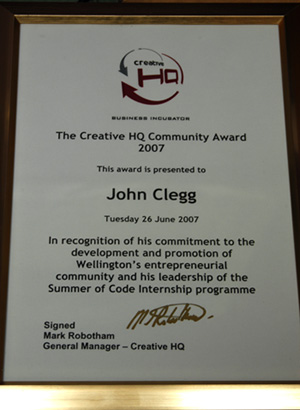Thoughts on hiring => writing a better resume part i…
Wednesday, June 27th, 2007We’re looking for a couple of developers and I’ve been going through a number of resumes. Unfortunately, its a frustrating process as most of the resumes are poorly structured and written really badly.
I want to offer some advice on writing your resume, which is based on my experience both as a contractor looking for work and an employer of dozens of tech people. I’m borrowing heavily from the book “Pitch Yourself” and I’m providing some general advice that is applicable to writing a resume for any industry. This post expands on the talks that I gave at the Summer of Code and Victoria University. (Here’s the powerpoint for my last talk)
The problem with current resumes
Here is snippet of a resume from Bob (Edited from a real resume)
June 2002 Developer – X Consulting company, Wellington
I was worked for 12 months with the X team as a developer on the Alpha project – a secure trading system . The Alpha project had 10,000 active users and clients included Y finance company and Z bank. The project used extensively Enterprise Java Beans, Open Java Trading System and Oracle technologies.
Ok, so what’s wrong with this resume snippet. The problem is that it only gives me half of the information I need. From this snippet, I can tell where Bob worked, what role he did, how long we worked there and some of the technology involved. BUT I don’t know what he actually did! Did he work on the front end, or the back end or did he sweep the floor ? More importantly, the resume does not tell me what Bob was good at ?
What an employer really wants to know from your resume?
What is an employer really looking for your resume?
1) Who are you ? What are you passionate about? What makes you the person that you are? What are things that you are passionate about, what are you motivates you.
2) What are you really good at ? What are your core strengths or competencies? What are the 4-5 key skills that you have and can apply to your job. What sort of things ?? Here are some examples
- Strategical thinking
- Building relationships
- Problem solving
- Problem Analysis
- Effective Communications
3) Can you do it again? Your employer wants to know what are you going to do for them! They look at your experience as a guide to what you’ll do for them.
What are some personal attributes that an employer is looking for? Marc Anderssen (of Mozilla / Netscape fame ) suggests when hiring the best people you should look for three things.
- Drive – “self-motivation — people who will walk right through brick walls, on their own power, without having to be asked, to achieve whatever goal is in front of them.”
- Curiosity – “Anyone who loves what they do is inherently intensely curious about their field, their profession, their craft.”
- Ethics – “What do people stand for”
I would add a slight twist on Curiousity and add learning. I love learning new things and I am always looking for people who want to learn new things.
So how do I decide what to put in my resume?
Here’s an overview of the process that the Pitch Yourself book suggests to help you find your key skills. The book promotes the “Objectives Analysis Action Results” (OAAR) approach as a framework to figure this out.
- Deconstruct your experience – You’ll need to look at your experience and deconstruct it to find your core skills. For of the major projects you’ve been involved in answer these questions.
- What were the objectives?
- What analysis did you make?
- What actions did you take?
- What were the results?
- Think about what you did – Look at your de-constructed experience and think about the implications of what you did. If you go through this process you’ll start to find a number of common behaviours that will start to identify your key skills.
- Build a list of competencies – You should be able to have a list of experiences that can be arranged like this.
- Arrange your skills list – Create your all list of demonstrate skills with a story how you can deliver.
| Your Story | Behaviours displayed | Key skills | |
|---|---|---|---|
| Objectives | |||
| Analysis | |||
| Action | |||
| Results |
So what does this look like in action, here is a snippet of one persons core skills.
Effective Communications – In the aviation industry it is essential to convey and receive information succinctly. I use effective briefing techniques that are imperative for a successful flight from the ground up (and down again). I have an approachable style and carry out my tasks in accordance to the Standard Operating Procedures, whilst liaising with all my fellow crew in an open and co-operative manner, resulting in a reduction of inherent risk and shared knowledge.
One final thing to think about when writing your resume, Tom Peters (Management and change guru) says that you should aim to add something significant to your resume every three months. If you’re not doing that then you should think about a change.
Challenges in writing your first resume
There are a couple more challenges in writing your first resume. Basically you don’t have so much experience to call up to build your skills profile. In truth you can apply the same process to your university studies. You can use the OAAR technique on each one of your courses. A employer is looking for what you’re good at and what you are really interested in. ie. If you really like AI then think about what you like about it and why and use that in your resume.
So what now ?
Your resume needs to be tailored for every job. Why? You’ll have a variety of skills and experiences where not all will be appropriate for this role. So you need to tailor it to fit with the profile that their looking for. Also if you tailor your resume for every role you’ll have more luck with the automated bots (Do you think Google process all 3.5k resumes a day by hand ???) and recruitment agencies that do key word searching.
Make sure that your recruitment agent knows that, so that you can put your best resume forward for every job.
How long ?
Your resume should be one page. Why ? 30 seconds – That’s the time you’ve got to make an impression. You have to hook some to want to learn more about you, so you need to short, sharp and to the point.
The basic structure should be
- Name and contact details
- Personal statement
- Table of 4-5 core skills
- Summary of Experience and Education – (Only where you have work, what role and for how long)
That’s it!
But what about my technical skills ? What about my academic results? They can be on other pages.
Next time…
That’s enough to chew on, in my next post I’ll be outlining some thoughts on how to put your technical skills / experience down on paper.




